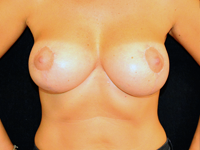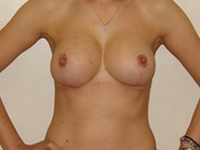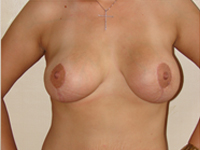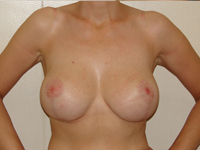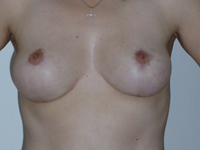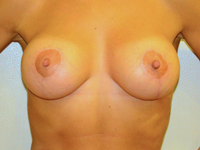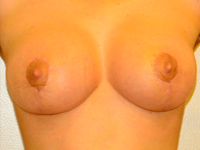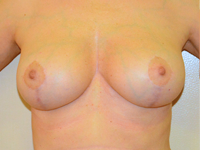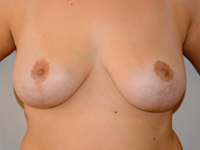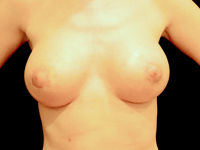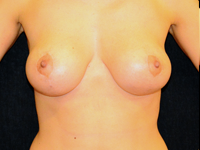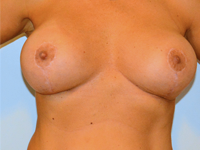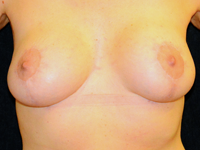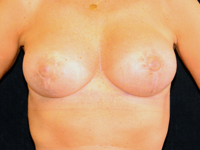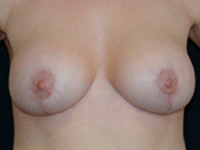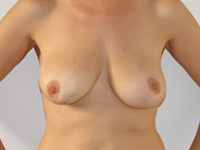BREAST LIFT
OBJECTIVES
Breast lift, technically called mastopexy, is surgery to uplift and improve the shape of a female breast that:
» Sags or is pendulous, but is proportionate with the body frame
» Has lost firmness and skin elasticity
» Has a flatter, elongated shape
» Has a nipple and areola (the pigmented skin surrounding the nipple) that point downward
» Has stretched skin and an enlarged areola
PREOPERATIVE CONSULTATION
A breast lift is appropriate for women who wish to improve breast shape and position. When an increase in breast volume is also desired, breast implants may be inserted in conjunction with a breast lift.
In general, breast lift raises and firms the breasts by removing excess skin and tightening the surrounding tissue to reshape and support the new breast contour. Sometimes the areola has become enlarged over time, and a breast lift will reduce this as well. A breast lift rejuvenates the female figure with a breast profile that is more youthful, uplifted and firm.
A breast lift is best performed on:
» Healthy individuals who do not have a life-threatening illness or medical conditions that can impair healing
» Non-smokers
» Individuals with a positive outlook and specific goals in mind for improving their body image
Good candidates for a breast lift are generally women of normal, stable weight whose breasts are fully developed.
Breast lift is appropriate in younger women as well, most commonly in cases of breast asymmetry where the position of one breast is lower than the other.
Overall health and personal outlook can greatly impact the outcome of breast lift surgery. These will be carefully evaluated in consultation with the plastic surgeon. The success of the procedure, safety and overall satisfaction require that:
» Honestly share the patient’s expectations with the plastic surgeon
» Fully disclose health history, current medication, the use of vitamins, herbal supplements, alcohol, tobacco and drugs
» Be candid about any history of breast cancer in your family and personal breast health
» Commit to precisely following all of the plastic surgeon’s instructions
While a breast lift does not generally affect breast function, women who are planning future pregnancies should discuss this with the plastic surgeon. The changes that occur in the breast during pregnancy can minimize or reverse the improvement a breast lift provides. Likewise, plans for significant weight loss should also be discussed.
PROCEDURE TYPES
Breast lift is a highly individualized procedure achieved through a variety of incision patterns and techniques. The appropriate technique for each case will be determined based on:
» Breast size and shape
» The size and position of the areola
» The degree of breast sagging
» Skin quality and skin elasticity as well as the amount of extra skin
There are many variations to the procedure, however one of the most common is a pattern with three incisions:
» Around the areola
» Vertically down from the areola to the breast crease
» Horizontally along the breast crease
PROCEDURE OVERVIEW
Through these incisions, the underlying breast tissue is lifted and reshaped to improve breast contour and firmness. The nipple and areola are repositioned to a natural, more youthful height. If necessary, enlarged areolas are reduced by excising skin at the perimeter. Excess breast skin is removed to compensate for a loss of elasticity.
Alternative techniques eliminate either the horizontal incision at the breast crease, the vertical incision from the areola to the breast crease or sometimes both. In any case, incisions are usually placed so that they can be hidden under clothing and swimsuits. Non-removable sutures are layered deep within the breast tissue to create and support the newly shaped breasts. Sutures, skin adhesives and/or surgical tape may be used to close the skin.
Once the procedure is completed, dressing or bandages will be applied to the incisions and an elastic bandage or support bra will minimize swelling and support the breasts as they heal. A small, thin tube may be temporarily placed under the skin to drain any excess blood that may collect.
RECOVERY
Initial healing will include swelling and discomfort at the incision sites. Discomfort is common and can be controlled with medication. A support bra may be recommended around the clock for the first few weeks. A return to light, normal activity is possible usually within a few days of surgery. Initial wound healing may take 5 to 10 days, at which time any sutures will be removed. The patient will be ready to return to work and normal activity at this time, if she feels comfortable, so long as she does not engage in any heavy lifting or vigorous exercise. Healing will continue for several weeks as swelling dissipates and incisions lines continue to improve.
RISKS
Possible risks of a breast lift include blood pooling beneath the skin (hematoma), infection or poor healing at the incision site and changes in nipple or breast sensations that are usually temporary. All surgery carries risks associated with anesthesia.
RESULTS
The final results of the breast lift will appear over the next few months as breast shape and position continue to settle. Incision lines are permanent, but they most likely won’t be visible under the bathing suit.
Over time, the breast can continue to change due to aging and gravidity. The new breast profile is best maintained by maintaining the weight, a healthy lifestyle and proper support of the breast.





